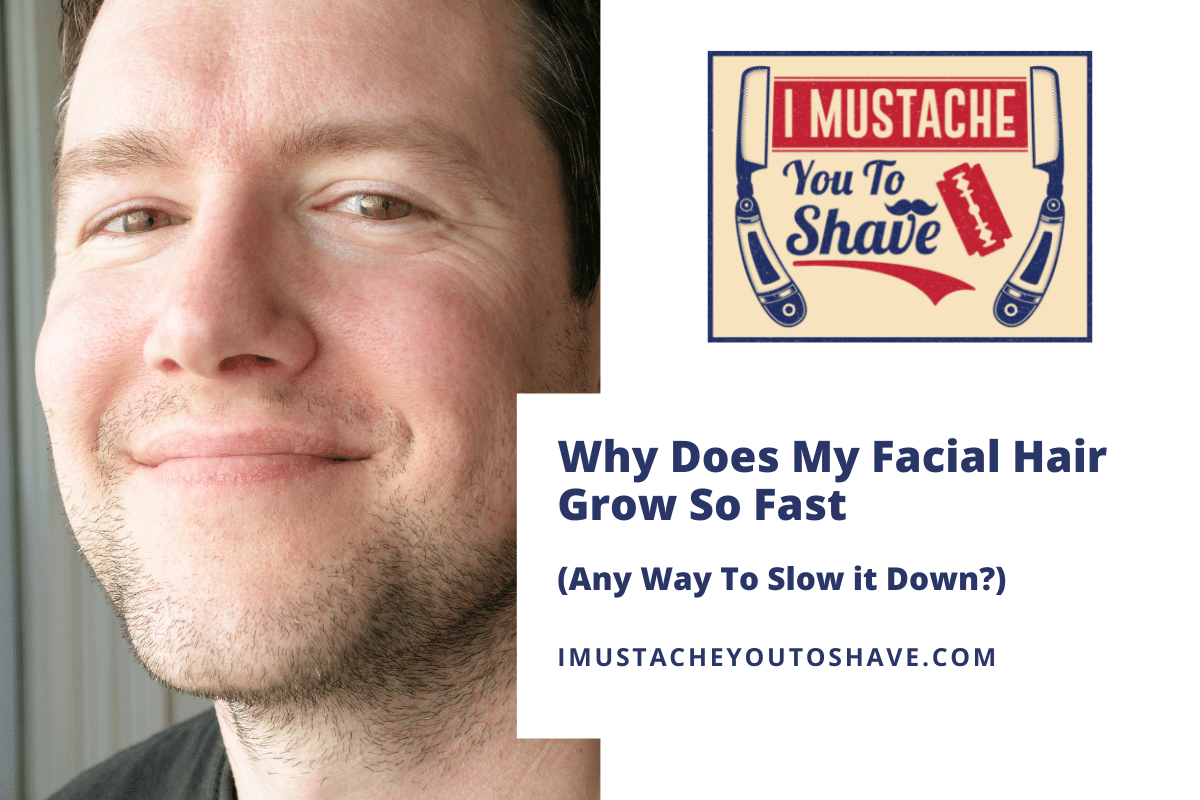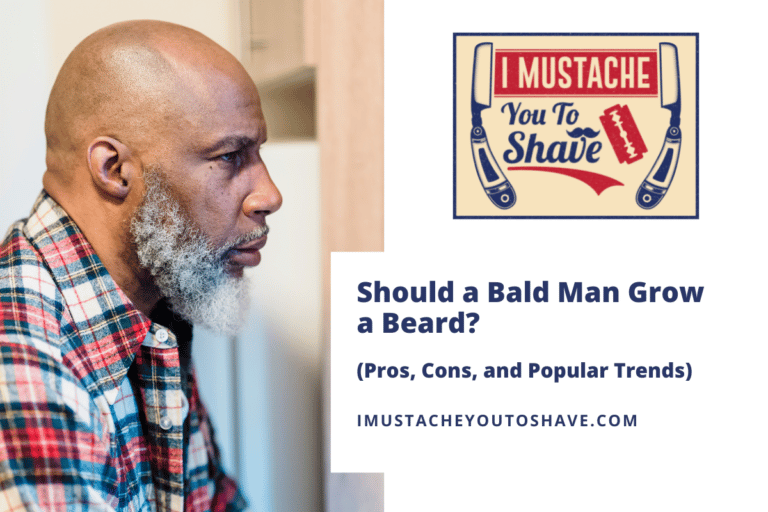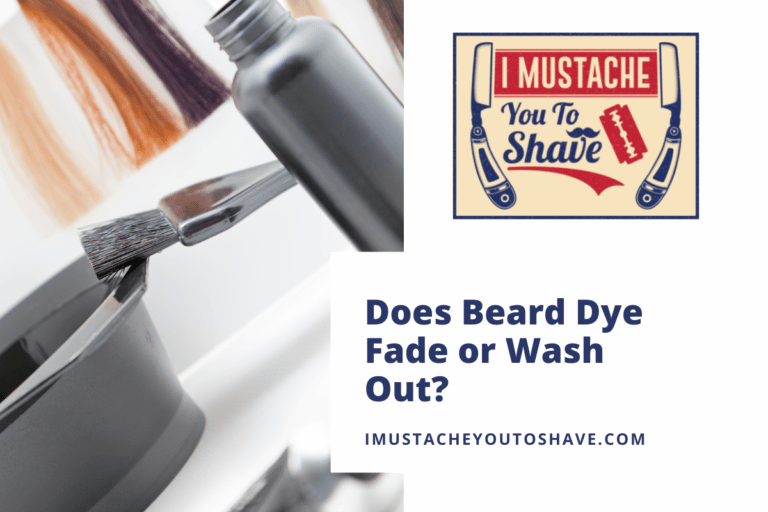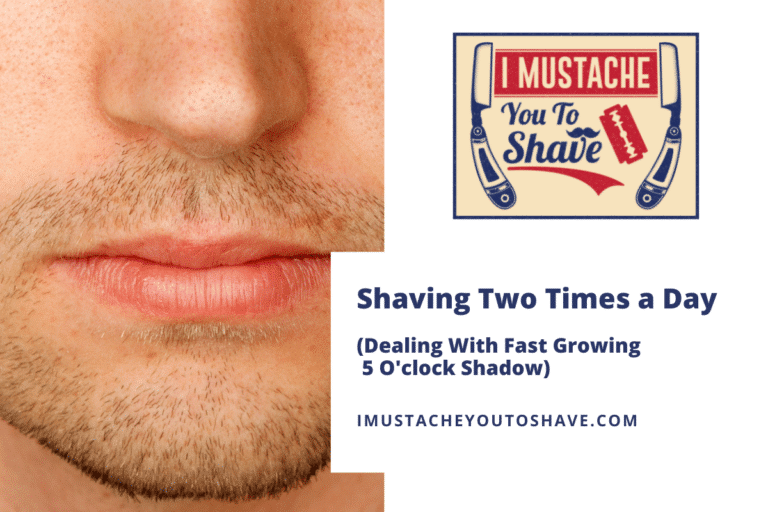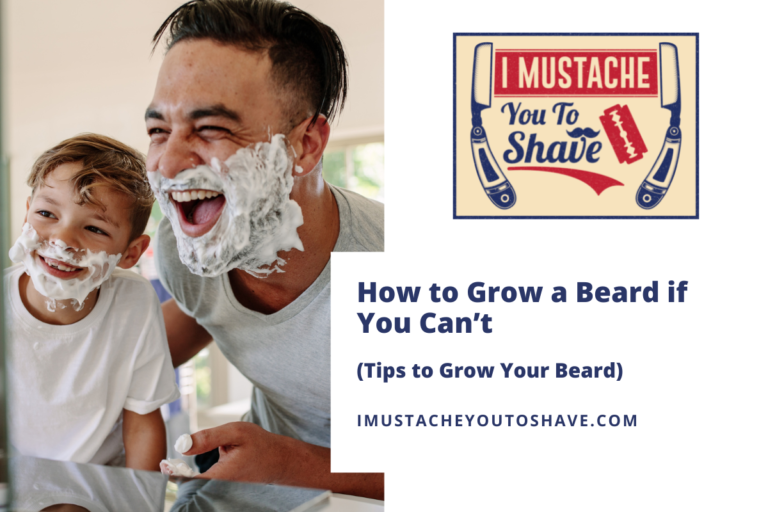Why Does My Facial Hair Grow So Fast (Beards, Mustaches, and Sideburns)
You shaved this morning, but your beard is already visible by lunch hour. Why is your facial hair growing so fast? Is there anything you can do to slow down the pace? Let’s look at some beard science to find the answers.
Genetics is the biggest factor involved with how fast your facial hair grows both because they determine not only the number of hair follicles on your face and how quickly they grow but also the size, shape, color, and orientation of your facial hair, which can give the illusion that facial hair is growing more quickly than it is.
Read on if you want to learn the science behind what makes your beard grow!
Why does my facial hair grow so fast (6 reasons a beard grows)
The color of your hair, eyes, and even your ease or difficulty growing facial hair can be traced back to your genes. Your genetic makeup affects the sensitivity of your hair follicles to hormones.
There are several reasons why your beard grows fast:
- Genetics
- Ethnic background
- Hormone levels
- Shape and size of facial hair follicles
- Orientation of the facial hair follicles on your face
- Color of your facial hairs
Testosterone and dihydrotestosterone are the specific hormones responsible for beard growth. Testosterone is responsible for priming hair follicles, while dihydrotestosterone promotes the linear growth of the hair.
There are two main types of hair: vellus and terminal. Vellus hairs are short, thin, and wispy. Terminal hairs are androgenic – these are the hairs that are found on your face and chin. This type of hair grows thicker, faster, and longer than vellus hair. Typically, you should expect to see about one-quarter of an inch per month of beard hair growth.
Fun Fact: The Guinness World record holder for the longest beard was Hans Langseth. His beard measured in at 17 feet, 6 inches. He was of Norwegian-American descent.
Genetics
We’re all born with a certain number of hair follicles. Each follicle is independent and the hairs must go through the four stages of hair growth: anagen, catagen, telogen, and exogen. Your genes affect how quickly each hair progresses through this process.
An individual’s genetics is the primary determiner of facial hair growth. A man’s father and maternal and paternal grandfathers predict beard growth patterns.
A specific gene, Lxh2, has been discovered to regulate hair growth. New findings like these can lead to intervention strategies where hair growth could be turned on and off.
Ethnic background
A 2017 study showed that 35% of white/Caucasian males, 35% of black/African American males, 26% of Hispanic American/Latino males, and 10% of Asian males always wear a beard. These trends are affected by the ease of beard growth.
A man’s ethnic background can affect how fast and how thick his beard grows.
Surprisingly, the ethnicity with the densest hair is Caucasians, specifically those of Semitic or Mediterranean descent. In contrast, Asians have the least hair density. These findings align with the above study about men who sport full-time beards.
Even among women, race has been clinically proven to be a larger predictor of facial hair growth than skin pigmentation.
Fun Fact: The hairiest man alive is Larry Gomez, nicknamed “Wolf Man” from California. 98% of his body is covered in hair. He is one of only 100 people living with the rare genetic condition, hypertrichosis, which causes excess hair to grow.
Hormones (Testosterone)
The majority of men have testosterone within normal limits. The rule of thumb is if you can make it through puberty and grow secondary hair in other places, you have acceptable hormone levels.
Testosterone is the main androgen hormone responsible for facial hair growth. The ability of the hair follicles to convert testosterone into dihydrotestosterone affects the growth rate.
While most people think that beard growth rates correspond to testosterone levels, studies show that beard length is not an adequate predictor of this hormone’s level of dominance. However, if you are seeing full, fast beard growth, chances are your testosterone levels are healthy.
Factors that affect testosterone
Facial hair follicles are fed by blood vessels. A healthy lifestyle keeps blood vessels in tip-top shape. Your diet and lifestyle choices not only affect your body’s health but also directly affect facial hair health.
There are lifestyle factors that affect a person’s testosterone levels, potentially causing low testosterone. Diet, exercise, stress, and rest are important for hormone maintenance. Another big factor is age, since testosterone levels tend to peak in the early 30s and then start to decline.
If you want to slow down your beard growth, don’t try sabotaging these areas. Remember, testosterone is only one factor responsible for your beard journey. These tips can keep your hormone levels in check if you desire faster-growing facial hair.
Let’s look at some specific changes you can make to keep your testosterone at peak efficiency:
- Diet – A healthy, balanced diet is key to normal testosterone levels. Studies show that men who eat a large amount of bread, dairy, and desserts have lower serum testosterone levels. Instead, opt for a diet rich in lean proteins, dark leafy greens, and berries.
- Exercise – Exercise does your body good as well as your testosterone levels. Testosterone increases after a workout. This increase can last up to an hour, depending on the age of the man. While cardiovascular exercises are important, weight lifting and strength training affect levels the most.
- Stress – Stress causes the hormone cortisol to rise, which can adversely affect testosterone in men. The good news is that testosterone rebounded when stressors were eliminated or lessened.
- Rest – Statistics show that 15% of the U.S. working population only gets 5 hours of sleep per night. Sleep deprivation can cause testosterone levels to plummet. One study showed a 10-15% decrease in healthy men who were sleep-deprived for one week.
Shape and size of facial hair follicles
Many people don’t really think about the shape and size of the hair on their face, but it is a huge factor in your facial hair and how you’ll need to style it.
The shape and size will also play a big part when it comes time to shaving – larger hair is often more coarse, while flat or coiled hair often causes issues with ingrown hairs.
In fact, the Mayo Clinic says that ingrown hair occurs after you have shaved or removed hair on your face. Coiled or kinky hair will often curl and bend back towards your skin as it grows, occasionally growing back into the skin and causing ingrown hair.
Here is a quick comparison between typical hair shapes:
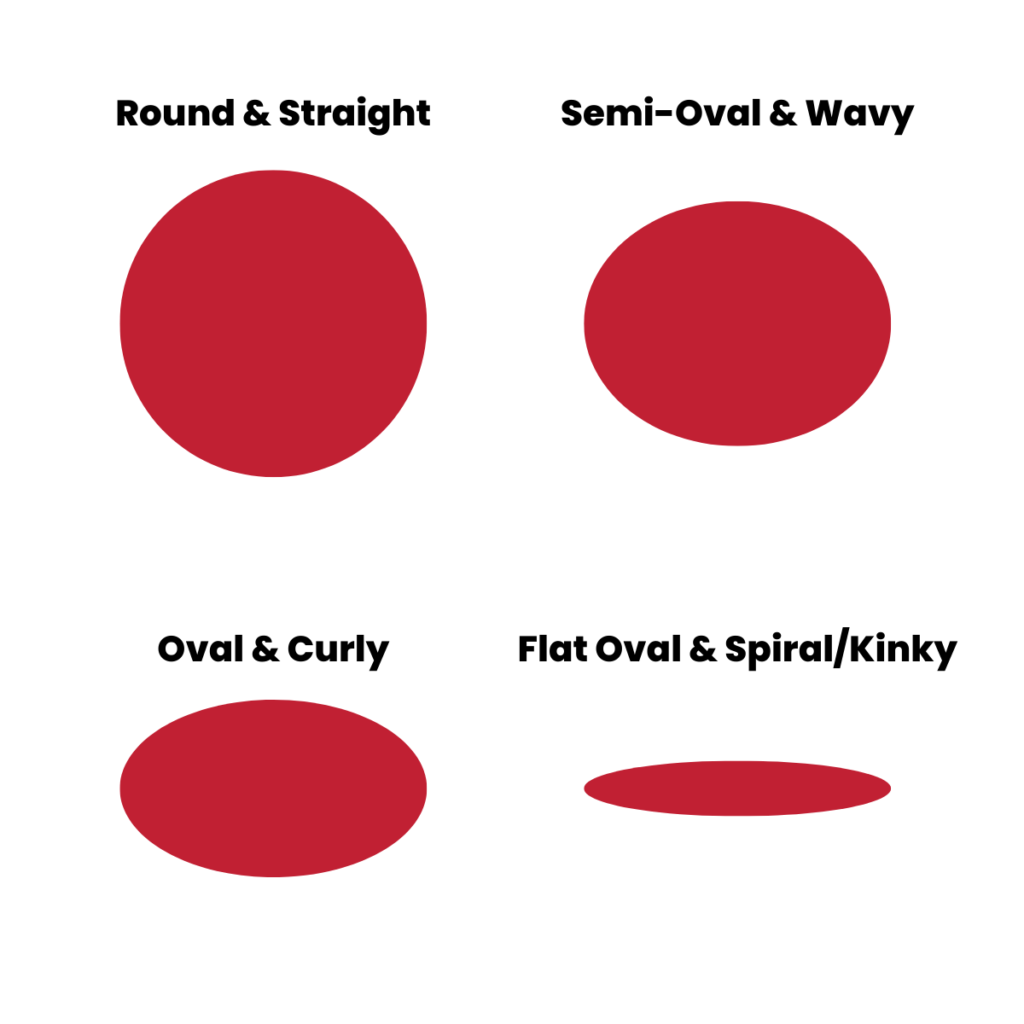
Orientation of the facial hair follicles on your face
While the shape and size of your hair follicles determine how the hair behaves as it grows, the direction or orientation of the hair follicle determines the direction that the hair will grow over time.
A lot of men don’t really pay attention to this concept, but it is incredibly important not just for how quickly your beard grows or what it will look as it grows, but also while shaving.
You’ve probably heard that you should shave ‘with the grain,’ which is good advice. But, if your hair is growing in different directions all over your face, that means you’ll need to change up the orientation of your razor to stay with the grain. Simply shaving up-down on every pass will usually mean shaving against the grain at least half the time.
Here is a quick visual for you:
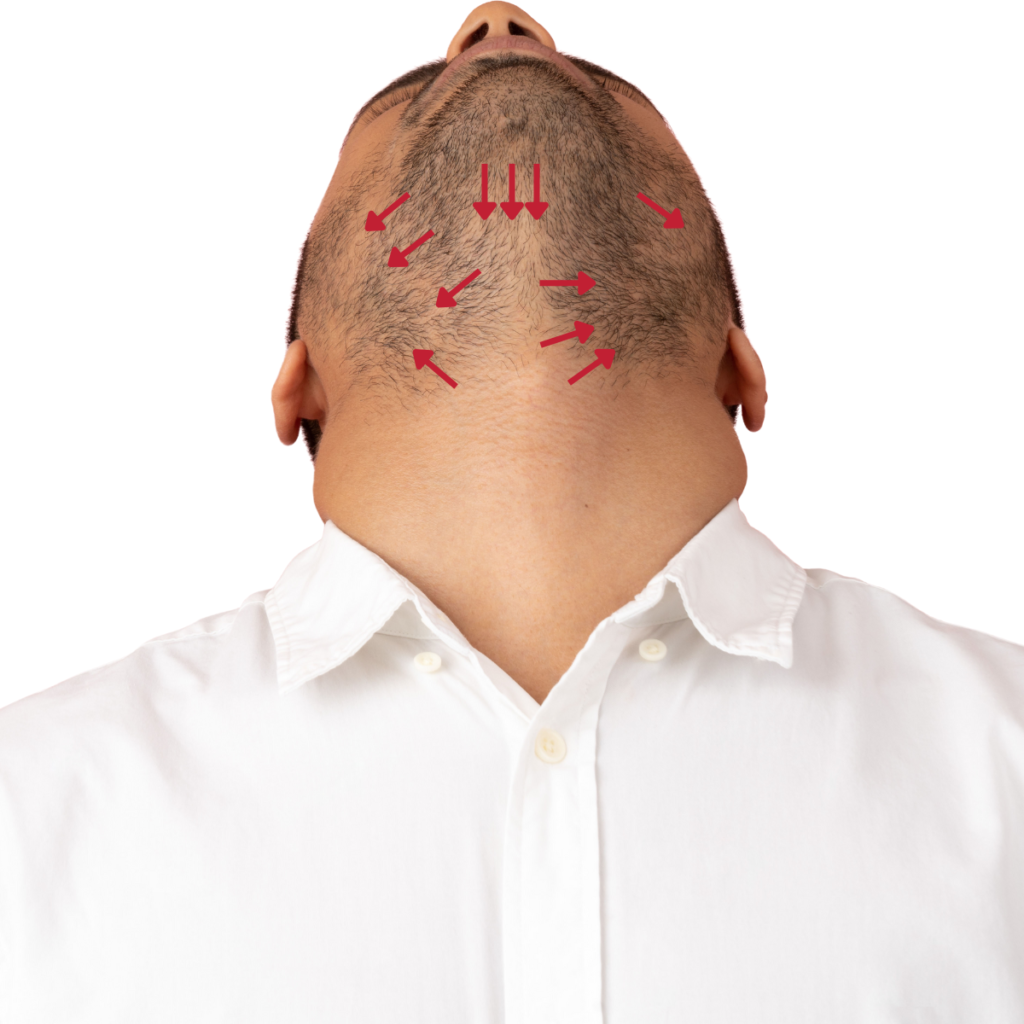
The biggest way that hair direction impacts beard hair growth is the visual impact – hair that grows across your face rather than straight out can make it appear as though your beard is thicker or fuller than it really is.
Color of your facial hairs
The color of your facial hair plays a big part in the perceived speed at which your beard grows.
Darker facial hair appears to grow more quickly because it contrasts with the skin more and is noticeable long before lighter color hair would be. Again, this doesn’t mean that darker hair grows faster. It just LOOKS like it grows faster.
Here is a quick visual comparison:
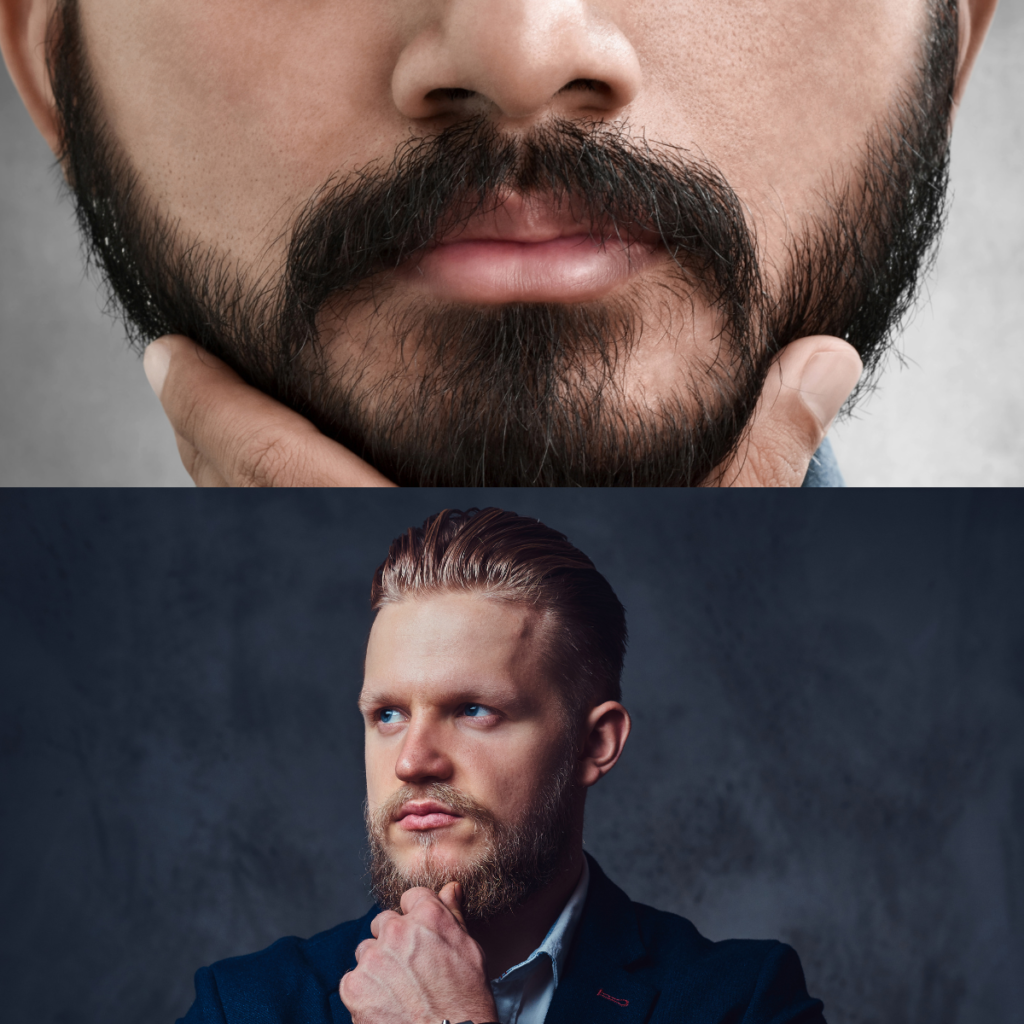
Does shaving make facial hair grow faster?
We’ve all heard the myth that shaving can make the hair grow back thicker or faster. However, this isn’t true. The hair follicles are already genetically programmed with your hair growth speed.
Shaving does not make facial hair grow faster. When hair begins to grow, the coarse tip of the hair makes it appear darker and more noticeable. Many people mistake this appearance as thicker or faster hair growth.
Hair growth depends on the amount of time it takes for each hair to grow through the growth stages. 90% of hairs are in the anagen growth phase at any given time.
Fun Fact: While shaving doesn’t make your facial hair grow faster, the seasons can! Studies show that the slowest facial growth is seen in January and February, while the fastest growth rate is seen in July.
Can you stop facial hair from growing so fast?
Beard lovers embrace a thick, quickly grown beard, while the clean-shaven camp looks for ways to slow down the growth and reduce shaving time. Facial hair grows an average of .27mm per day or one-half-inch per month. Of course, that’s just an average, so some men can experience a faster or slower rate.
While you can’t alter the genetics you were born with, there are ways to slow down facial hair growth. Ruling out any underlying medical concerns or using topical hair-slowing products may stop facial hair from growing at a fast rate.
Maybe your rapid-fire beard growth is a sign from the universe to grow and keep a beard full-time. However, if you are intent on slowing the stubble, there are some things you can try.
Rule out any medical concerns
If your hair suddenly grows faster than normal, there could be an underlying medical issue.
If you suddenly find your facial hair growing at warp speed, visit your doctor. Hormone imbalances, autoimmune issues, and even cancer can cause hair growth changes.
Use topical hair slowing products
There are hair-slowing products on the market specifically targeted at men and facial hair.
Magic Shaving Powder has gone viral on TikTok lately. It’s a depilatory that removes hair from under the skin causing it to take longer to grow back. Calcium thioglycolate and hydroxide are used to remove the hair. These chemicals can irritate sensitive skin, so do a patch test first.
Want to learn more about Magic Shaving Powder? Check out this article!

